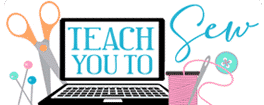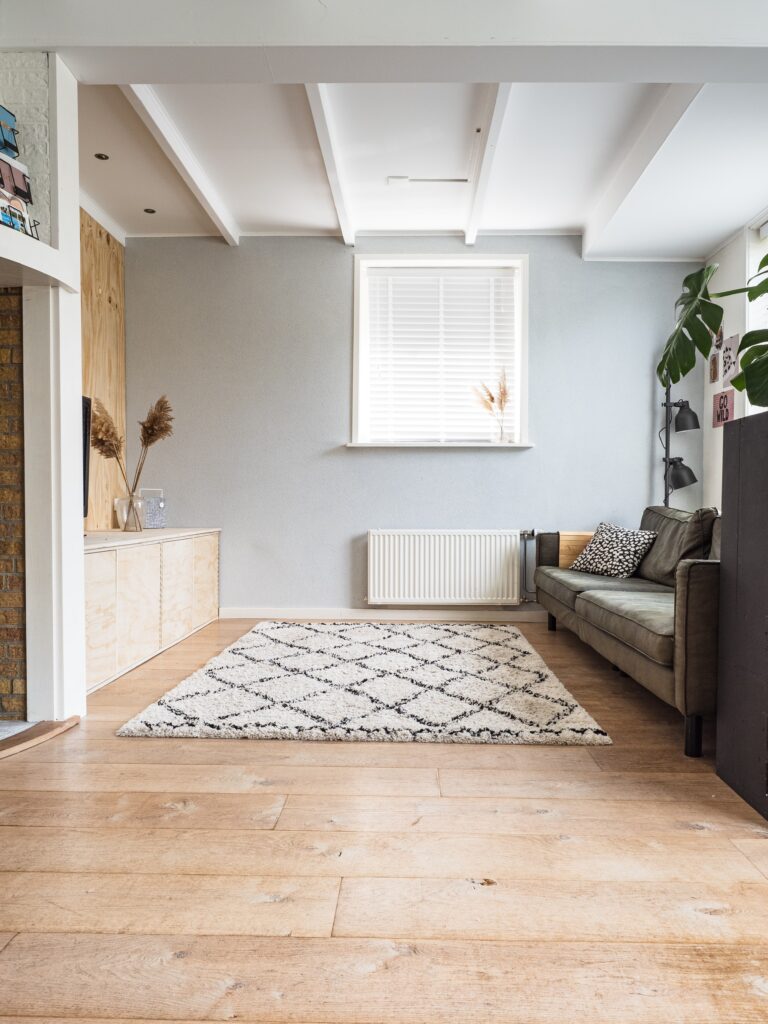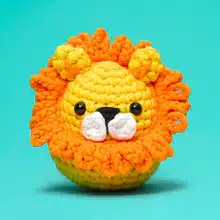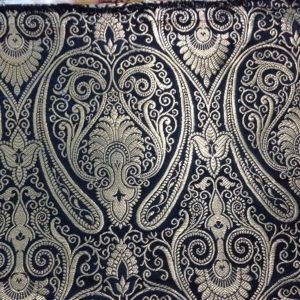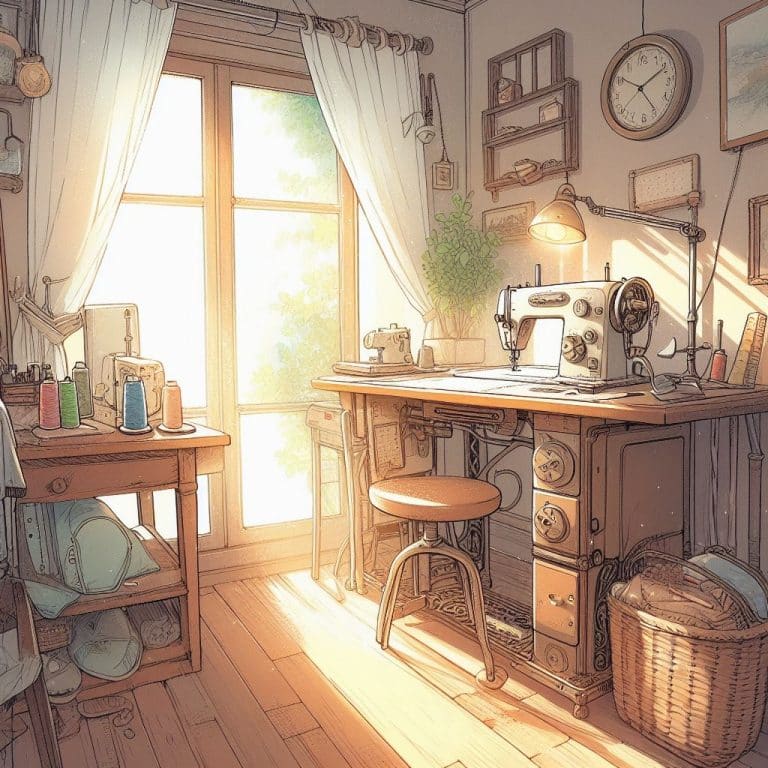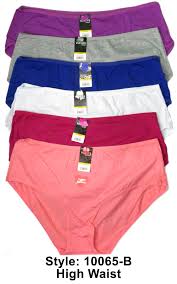4 Best Fabric Printers
Table of Contents
Best Fabric Printers For Home Fabric Design
I’ve got to share with you my 4 best Fabric Printers for home fabric design. Printing onto transfer paper and then using heat to transfer an image onto fabric allows for a high degree of customization and creativity at home. Almost any inkjet printer can be used to print designs onto transfer paper. Transfer paper can be purchased online or at most office or craft stores. Many types of paper are designed to work with all different inkjet printers, though some might be specific to the type of printer, like inks often are. Printers often work best with their own brand of ink cartridges.Key Takeaways
- Fabric printing at home has been made easy with advanced printers and improved inks.
- Top fabric printers on the market cater to different budgets and offer various features.
- Ready-to-print fabrics are available, alongside guidance on printing and post-print treatment for best results.
| Section | Content Summary |
|---|---|
| Fabric Printing Guide | Describes the process of fabric printing, mentioning pre-treated fabrics and fabrics you can print yourself. Discusses the importance of treating fabric for colorfastness. Provides a step-by-step guide on how to print on fabric using freezer paper and pre-treated cloth. |
| Inkjet Inks | Discusses the types of inks used in printers, including pigmented and dye-based ink, and how they impact print quality. Recommends checking reviews and manufacturer websites if purchasing a new inkjet printer. |
| Fabric Printing with a Laser | Describes the process of laser printing on fabric, including adhering fabric to freezer paper and using a fixative. Note that laser-printed fabric can be stiffer and more difficult to quilt by hand. |
| Epson Expression | Highlights this printer as a good choice for fabric printing, especially for smaller, 8.5 x 11 designs. Notes its compatibility with Epson inks and its ability to print, copy, scan, and do wireless or network-free printing. |
| Epson SureColor SC-P400 | Describes this printer’s ability to print images up to 13” and produces vibrant, true colors. Mentions its ability to print on sheets or rolls of paper, produce matte or gloss images, and its eight-color pigment ink set with individual 14ml ink cartridges. |
| Canon PIXMA TS9520 Wireless Photo All in One Printer | Highlights this printer’s five-color, individual ink system. Notes its ability to print from a computer, smartphone, or tablet, and can print double-sided on double-sided matte photo paper. Also functions as a copier and scanner. |
| Fabric Printer Buying Guide | Discusses the benefits of printing designs at home for customization and cost-effectiveness. Suggests that Epson printers and inks often work well for image transfers. Discusses budget considerations and quality expectations for image transfers. |
Professionally prepared fabrics
Pre-treated fabrics are sold in sheets and rolls, with both varieties available in a variety of sizes. Printable fabrics are already reinforced with stiff materials to keep them from rippling as they pass through the printer. After the printing is finished, the backings readily peel away. Each company discusses how to print their products as well as how to handle the materials thereafter to remove excess ink and ensure that the ink that remains is colorfast. Commercial printables are convenient, but they are more expensive than fabrics that have been prepared for home printing. Fabric sheets sold in stores are usually designed for inkjet printers, not laser printers. White cotton is commonly used in commercial fabric printers.Fabrics You Can Print Yourself
Freezer paper is suited for fabric printed on inkjet and laser printers and makes an excellent background for your home-prepped printouts. Freezer paper has a dull and glossy side, and after a few passes with a medium-hot iron, the shiny side clings to fabric easily. When the printing is finished, the paper pulls away easily, leaving no residue on the cloth.Fabric should be treated for colorfastness.
Before printing with an inkjet printer, pre-treat your cloth with a commercial product. Depending on the sort of printer you use, the C. Jenkins Co. has many possibilities. If you don’t follow the directions exactly, the prints will fade. Choose a product that works with your printer’s inks, which can be pigmented or dye-based (or a combo of the two). Preserve It! by Krylon is a product that may be used to assist pigmented inks set on the cloth after printing.Printing on Fabric
For your first trials, stick to 100% cotton textiles and go with white. Most quilting cotton has worked successfully for us, however, heavier fabrics with a thicker weave haven’t. Your outcomes may vary.How to Print on Fabric
- If you’re using a product to pre-treat the fabrics, follow the manufacturer’s recommendations for treatment and drying.
- Tear a 12-inch section of freezer paper and cut away a section that is just over 8 1/2 inches across.
- Using freezer paper as a guide, press a piece of treated cotton fabric that is slightly larger than the freezer paper. Steam should not be used on pretreated fabrics. Remove any remaining loose threads from the fabric’s surface.
- Place the shiny side of the freezer paper on top of the fabric’s wrong side (if there is one), and press the paper side with a medium-hot iron (no steam)
- Trim the glued pair to 8 1/2 by 11 inches with rotary cutting equipment, a size that works with most printers. If the fabric splits from the freezer paper along one edge, iron it again. It’s critical that all of the fabric’s edges are securely fastened to the paper and free of loose threads.
- Create and trace around an 8 1/2 by 11-inch template if you don’t have rotary cutting tools (a piece of cardstock works nicely, and so do templates made from file folders). Cut the bonded fabric using scissors.
- Check to see if the fabric should be positioned face up or face down before inserting the sheet into the printer’s manual feed area.
- Create a print on the bonded cloth. The printing options vary. Select the highest quality level available on your printer, which is typically referred to as a ‘photo’ setting. The best results are obtained by using a high-resolution photograph (photos downloaded from the Internet are usually of lower quality).
- Allow the inks to dry completely before carefully peeling away the freezer paper backing.
- If you used a commercial fixative agent to pre-treat the cloth, rinse or wash it as directed.
- To set the inks, some people propose rinsing them in a vinegar solution, however, this doesn’t always work. If you’re printing images, you’ll want them to last, and commercial solutions can help you do that.
- While working with small pieces of freezer paper may be easier than attempting to control bigger yardages, your results may vary. To see which way you prefer, try both.
Inkjet Inks
inkjet inks are a type of ink that is used in printers. Gloria Hansen provides excellent advice on the many types of inks used in printers, including a comparison of pigmented versus dye-based ink prints, as well as how the same images printed with each type of ink have aged over time. Inkjet printers and their inks are always changing. With different types of inks, you can get fantastic results with HP and Epson printers, as well as good results with a little Canon printer. If you don’t already have an inkjet printer, check reviews and look at manufacturer websites.Fabric printing with a laser
Laser printing on fabric is comparable to inkjet printing, except you don’t have to pre-treat the fabric. As previously described,- adhere the fabric to freezer paper and feed it through the printer’s manual feed area.
- Place the print on newspapers outside or in a well-ventilated area with the freezer paper still attached.
- Apply many light coatings of Krylon Workable Fixatif to the fabric (or another similar product).
- Laser-printed fabric is stiff and difficult to hand quilt since the toner can be thick and the fixative adds depth. You might want to save laser-printed fabric for fabric postcards, machine-quilted parts of wall hangings, and other crafts that don’t need to be quilted at all.
Best Fabric Printers
Here are our fabric printer reviews.1. Epson Expression

- Epson printers work best with Epson inks
- This printer can print, copy, and scan
- Can do wireless printing and can also do network-free printing, so sending images from a phone or tablet is easy
2. Epson SureColor SC-P400
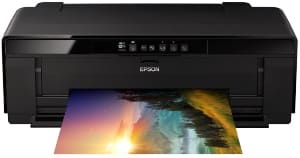
- The printer can print on sheets of paper or on rolls of paper
- Can print images as matte or as gloss
- Has an eight-color pigment ink set, and features individual 14ml ink cartridges
3. Canon PIXMA TS9520 Wireless Photo All in One Printer
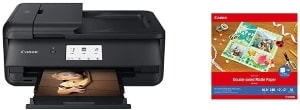
- Print from a computer, smartphone, or tablet
- Can print double-sided as well, on double-sided matte photo paper
- Also a copier and a scanner as well as a printer
4. Transfer Crafts T-Shirt Heat Press & Digital Sublimation Machine
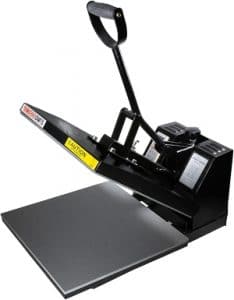
- Works great on t-shirts, totes, and other apparel items, as well as many other non-fabric items
- The heat plate on the machine is aluminum and is Teflon coated for even heat distribution
- The machine gets hot up to 500 degrees F
